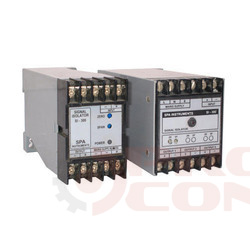

Isolation breaks the galvanic path between the input and output signal.

Isolation: Input signals outside the range of a digitizer can cause serious damage to sensitive equipment. Thermocouples and strain gauges are sensors that typically require amplification. Converting a 0-10mV signal to a 0-10V signal is an example of amplification.

Strategically placed external signal conditioners can magnify the voltage level before it can be affected by environmental noise. The following are common signal conditioning types:Īmplification: Amplification is when the overall magnitude of a signal is increased – thus increasing the measurement resolution as well as the sensitivity of the signal. It consists of an input and an output – where the input is, usually, a sensor that measures the environmental and/or structural variable. For each specific sensor, a signal conditioner serves as an interface to excite, scale, or buffer real-world signals.Ī signal conditioner is a circuit that performs a set of operations on a signal and makes it suitable for further processing. This circuit ensures proper conditioning of the output before any further signal processing can occur. Signal conditioners provide the essential circuitry between the sensor and the data acquisition system. If the data acquisition system is fed weak signals, the output is more likely to be meaningless. The output usually consists of small voltages, currents, or resistance changes. In addition, the full-scale outputs of most sensors are relatively weak. In real-world applications, sensors and transducers attached to the systems for measurements are often exposed to hostile environments where faults are likely to occur. This process of ‘conditioning’ signals is performed through an instrument called a signal conditioner – a device that converts one type of signal into a signal that is compatible with process monitoring and control devices. Signal conditioning amplifies and converts signals from various sensors and transducers into easy-to-read, compatible forms for data acquisition systems. Signal conditioning, a vital process performed within a data acquisition system, involves the manipulation of the analog signal output from sensors in preparation for the next stage of processing. In order for a data acquisition device to work effectively and accurately, the signal output from these various sensors requires signal conditioning. Inherently digital events, too – such as the tripping of a motor or a pulse generated by a positive displacement flowmeter – must be made interpretable as a transistor-to-transistor logic (TTL) level changes in voltage. In many industrial applications, there is a necessity for analog measurements – such as pressure, temperature, flow rate, load, ph/conductivity, and position – to be meaningfully recorded or manipulated by a computer. That is, natural processes tend to vary smoothly over time, not discontinuously changing states from black to white, from on to off.

Manufacturing processes and natural phenomena, however, are still, by their very nature, analog. And while computers have had an undeniably positive impact on the practice of data acquisition, they speak only a binary language of ones and zeroes. Today, digital computers and other microprocessor-based devices have replaced analog recording and display technologies in all but the simplest data acquisition.


 0 kommentar(er)
0 kommentar(er)
